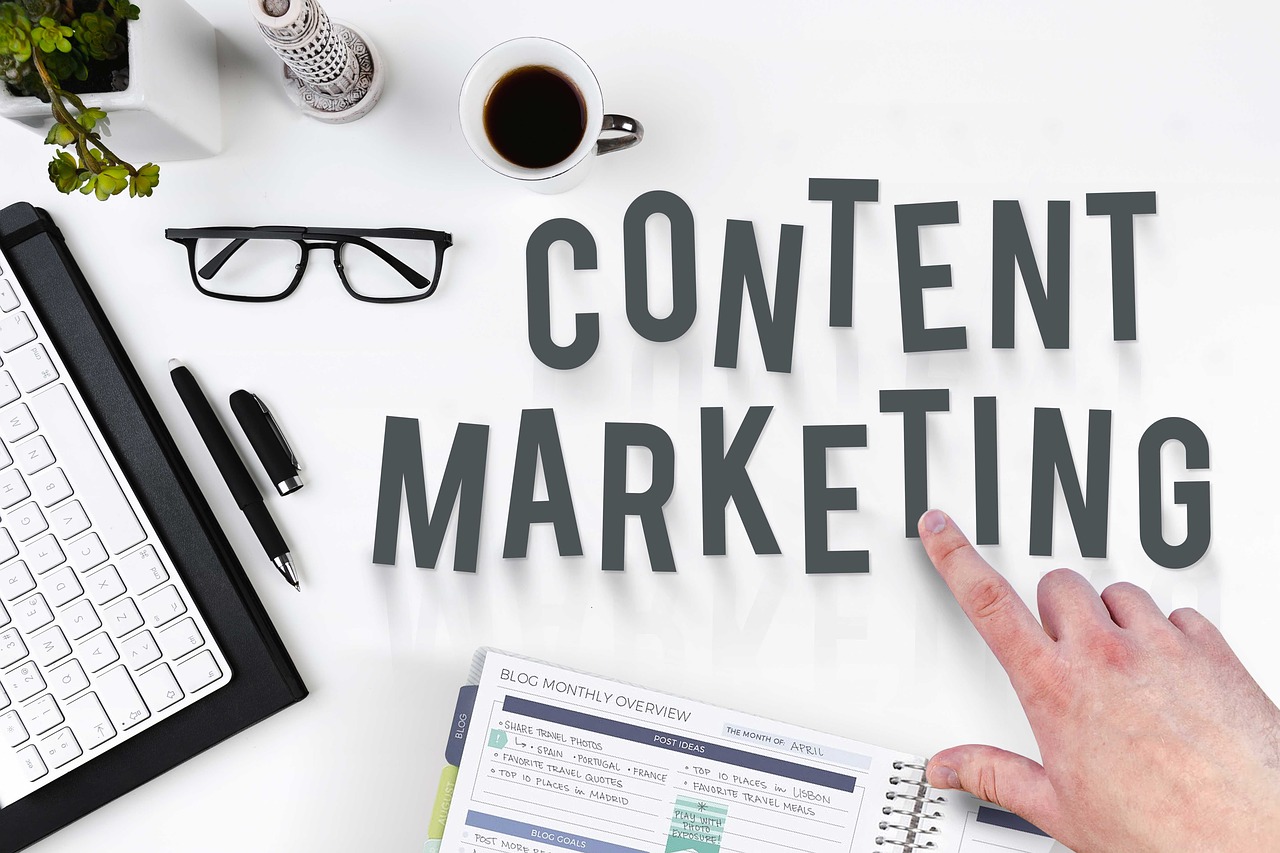Buyers are swarmed with hundreds of sales emails day in and day out. Of the small percentage of emails opened and read, only a minute fraction of those calls to action will succeed.
These realities have disheartened some marketers, who believe there are far more effective ways to communicate information than emails.
Here’s where we disagree. Email marketing is still effective in 2022. You just need to be better at it than the rest.
So, how can you overcome the crowd and become one of these select few?
Is there a way that you can ensure your sales emails are read and acted on?
In this article, we’ll look at five tips you can apply to get results on your sales emails.
1. Write a Converting Subject Line
Photo by Tyler Lastovich on Unsplash
Your email being opened heavily relies on the subject line. It is perhaps the biggest determining factor that dictates whether your email will be read or forgotten.
A quality subject line will be opened most of the time, depending on the industry, but a faulty subject line will go to the bin faster than you can say “hello.” So, what should you be paying attention to when designing your subject line?
Write Like a Person
Few things will get your email deleted as fast as a robotic-looking subject line. Keep your subject line simple. Imagine you’re writing to a friendly acquaintance.
Avoid Slogans
While catchy slogans like “Welcome To The Biggest Revolution In B2B History” used to work, they are now seen as tacky. It sounds much more like a PR pitch than something worth reading.
Don’t Capitalize Every Word
You Shouldn’t Be Capitalizing Every Word Of Your Subject Line Like This. Instead, capitalize the first letter, and write the rest in lowercase.
Some of the most successful subject lines are so simple you wouldn’t believe it. In fact, the following lines attain over 35% opening rates:
“Quick request”
“Trying to connect”
“[Their Company] cooperation with [Your Company]”
As you can see, none of these subject lines are very complicated — and that’s the whole point. You want to ensure that whoever is looking at the email knows it was written by a person and not a robot.
Avoid words that would suggest you’re sending an automated, spammy email. These are words like “Solution,” “State of the art,” and so on. The more these words are in the subject line of an email, the less likely it is to be read and followed upon.
2. Write the Perfect Opening Line
The opening line of your email establishes the connection between you and the recipient. For it to succeed, it’s crucial to know how you should address the recipient.
Get the Salutation Right
Does a first-name basis work? Are they a bit more traditional and would prefer to be addressed as Mrs. or Mr.?
You’ll need to know the answers to these questions before sending your email. The current trend in most industries is to be more casual. Personally, I’d look at an email starting with “Dear Mr. Finch” with distrust.
Your Subject Line and Opening Line Must Connect
An email that starts with an endearing and engaging subject line will be quickly dropped if the first few lines the recipient reads aren’t connected to it.
Let’s take an example from above. We’ll assume that you elected to lead with the subject line “Quick request.” What should your opening line be? You should be immediately pitching the idea that the two of you hop on a call to discuss your product in more depth.
Further Tips to Improve Your Opening Line
There’s a lot that goes into the opening line of an email, and here are some fundamentals that will make your opening line better:
1. Start with personalization.
Instead of using a generic “Hi, my name is…” opening, try to personalize it a little bit. Congratulate the recipient on a recent accomplishment or bring up a recent article on their site. This establishes that you’ve done your research and plants a seed of trust between you.
2. Establish context.
Quickly tell the recipient exactly why you’re reaching out. They don’t want to read a 300-word introduction before getting to the reason they’re talking with you.
3. Transition into your sales pitch.
The opening line should allow anyone who reads it to transition to your sales pitch naturally. This is crucial because if the transition is jarring, most recipients will elect to ignore it.
When it comes to personalization, don’t try to make generic, “at scale” emails. Avoid starting the email with a generic compliment like “We’ve taken notice of your work in X niche.”
Always be specific. The point of personalization is for the other party to know you’ve done your research.
3. Make Your Email the Right Length
Photo by Maxim Ilyahov on Unsplash
I can’t tell you the number of egregiously long emails that I receive on a weekly basis. If an email takes more than a minute to read, it’s going to the trash no matter how enticing its subject and opening lines are.
Your recipients are busy people, and a long email can be seen as showing disrespect to their time. At best, it’ll come off as self-important and egocentric.
Ensure that your email is simple and quick to read. Keep only the most vital information in this email. Any further USPs or comments can be made in a follow-up email.
Here are some quick pointers that will help you know if your email is short and simple enough:
1. Try reading your email on mobile.
If you have to scroll, it isn’t short enough.
2. Make it easy to comprehend.
The reader should be able to read your email in 10-30 seconds and understand the call to action.
3. It should elicit a quick and easy response.
Don’t burden your recipient with complex or time-consuming requests.
4. Keep the email short.
It should be no fewer than 50 words and no longer than 200.
Keeping to these pointers will drastically reduce the time your recipients need to read your email. With that comes a steady increase in conversions.
4. Craft a great email body
Before you sit down to write your email, closely consider what you want it to achieve.
Determine the Goal of Your Email
Decide whether the intent is to get an immediate click-through and sale, or if the goal is to get the interest of the recipient and get them on a call.
Next, decide if you want to offer them a free trial of a product, and if there are any upcoming products you want to inform them about.
At this point in the email, you’ve already written the opening and subject line explaining why you’re reaching out to the recipient. Now it’s time to give them a compelling pitch to set up your call to action.
Nail the Pitch
Your pitch should give more context to who you are. If you weren’t able to establish enough credibility and confidence in your opening lines (which can be tough in some industries), you could bolster that in your pitch.
Here, mentioning the results you’ve brought to other clients is ideal. For example, if you want the recipient to check out bitcoin prices using your site, clearly tell them why your site is the best for buying and trading cryptocurrency.
Give a one-liner of what problem you’re solving. It’s important to distill the essence of your pitch into a single sentence.
Put forth extremely clear benefits your recipient will reap if they follow through with your sales pitch. Make sure these are relevant to them and that they can clearly discern how you’re planning to help them.
For example, if you’re offering to write a guest post for a site, tell them how and why your guest post will attract visitors to their site.
Make it clear to the recipient that your email has been hand-crafted according to them and their needs. This is where most of the personalization comes in. Ensure your email pitch adheres to your recipient’s goals.
5. Write a Strong Closing
Photo by Luis Villasmil on Unsplash
The closing and signature sections of your sales email can be easy to disregard. However, the closing section of your email is where your recipient finally makes the decision whether or not they will respond to your email.
The call to action (CTA) is one of the most critical parts of your sales email. Here are some tips that will help you avoid common mistakes:
1. Be sure your CTA is clear.
If the reader doesn’t know what they need to do in order to work with you, they’re probably not going to reply to your email. End your emails with something concrete, such as “If you have time, we would like to hear from you at 5 PM on Wednesday.”
2. Make the decision easy.
Your CTA should always position the recipient for a simple and easy decision. Don’t put pressure on them or introduce any other factors that may be distracting or confusing.
3. Don’t ask for too much.
No matter how well put-together your sales email might be, asking your recipient for sensitive information or for a significant amount of resources to be poured into your business right off the bat isn’t going to work.
Finally, your signature should be kept as simple as possible while remaining professional. Avoid using images or other distracting elements. Simply include your name, title, phone number, and social media handles. This will help prospective clients connect with you without cluttering the email.










